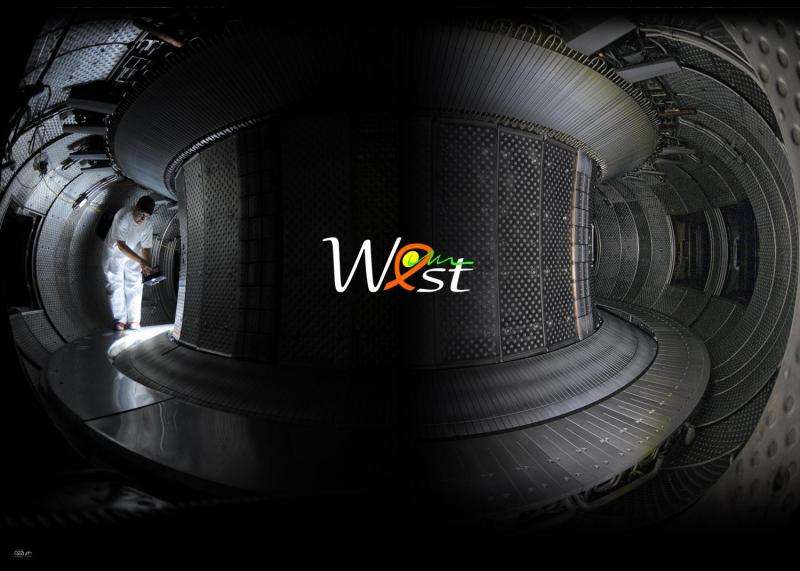Tokamak is ready to test ITER's internal components

On 14 December 2016, the WEST tokamak produced its first plasma, reflecting the success of the operations carried out since 2013 on the CEA nuclear fusion reactor. Now that this major milestone has been passed, preparation of the machine is continuing for a first experimental campaign in spring 2017. WEST will enable the CEA and its national and international partners to qualify technological "bricks" for the ITER project.
Since its construction in the 1980s, the Tore Supra tokamak has continued to evolve in order to improve plasma performances, even setting a world record with a stationary plasma lasting over six minutes for an extracted energy of 1 gigajoule (GJ). The WEST project - Tungsten (W) Environment in Steady-state Tokamak - aims to transform Tore Supra into a test bed for ITER or, more precisely, to test a "divertor" using ITER technology. The divertor, which is situated on the floor of the vacuum chamber, is a fundamental component as it receives most of the heat and particle fluxes coming from the central plasma. Its function is to extract the "ash" (helium) and part of the heat produced by the fusion reaction, whilst minimising the contamination of the plasma by the other impurities.
WEST makes it possible to:
- minimise risks (costs and deadlines) linked to the industrialisation of the high-tech components of the ITER divertor. Prototypes produced by the suppliers selected for the manufacture of the ITER divertor are already in place, and industrial pre-series are under preparation;
- to obtain initial experimental findings on the functioning of this divertor and to prepare the teams for its scientific exploitation in ITER;
- to test, in an accelerated manner, the durability and ageing of this plasma-facing component during extended discharges.
The challenges of plasma control
Plasma is a fourth state of matter after gas form, obtained by heating a gas to several million degrees. Plasma can be compared to a "soup" where nuclei and electrons are no longer linked and move around freely. When two "light" nuclei collide at high speed they can fuse, forming a heavier nucleus: that is nuclear fusion. The quantities of energy released are very significant, leading scientists to seek a way to exploit this reaction as a new source of sustainable energy; however, for this they need to be capable of creating, maintaining and controlling this plasma.
Provided by CEA





















